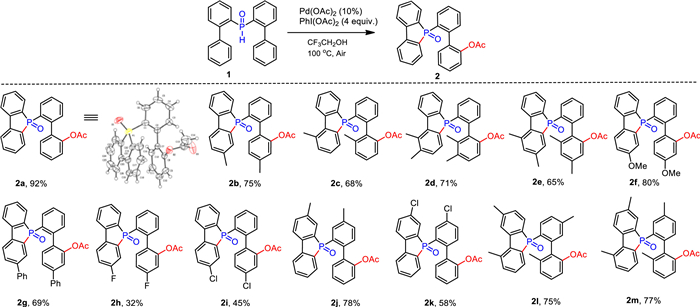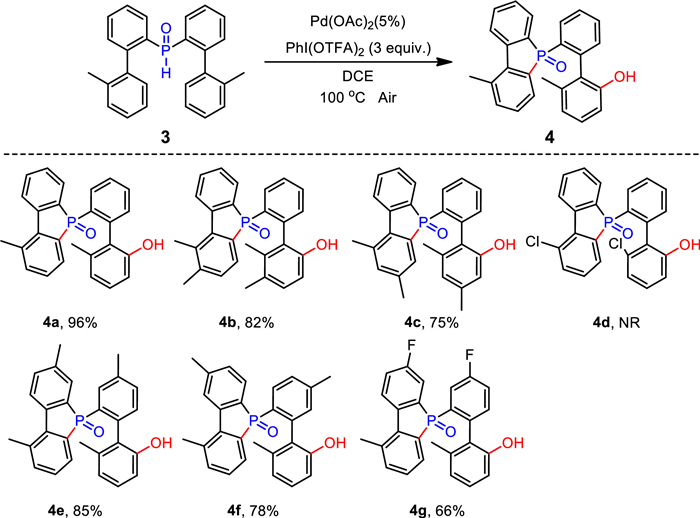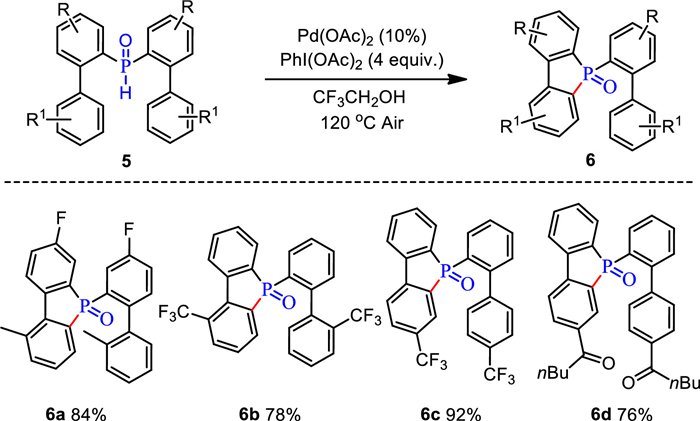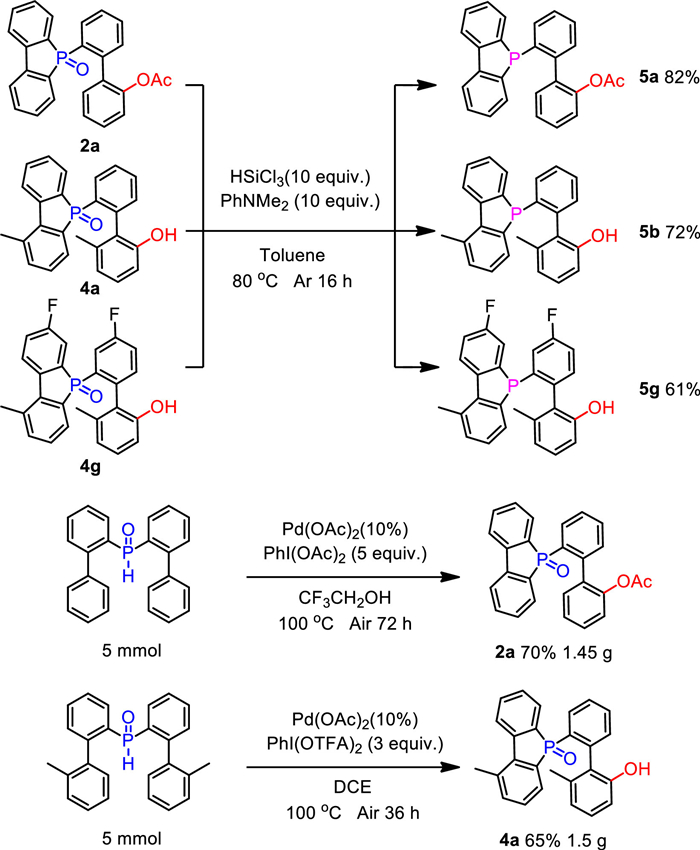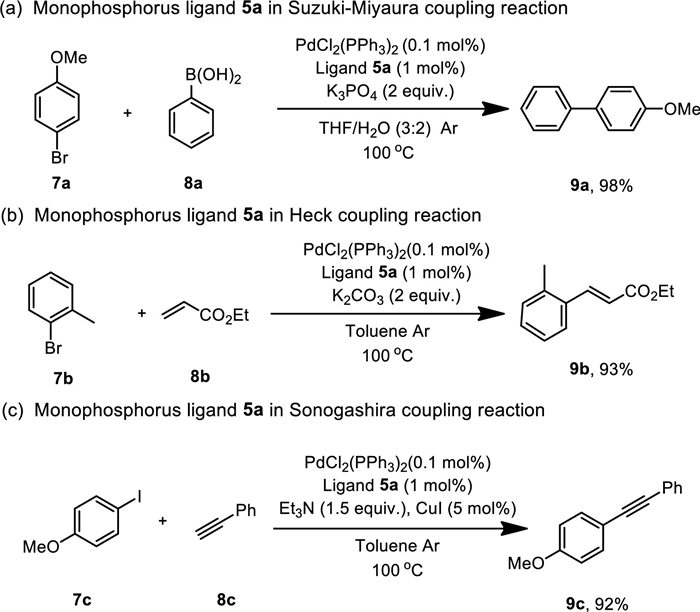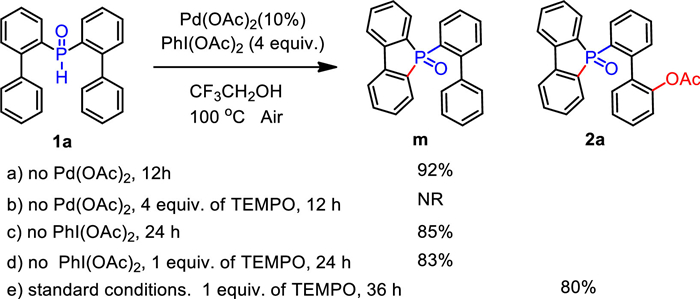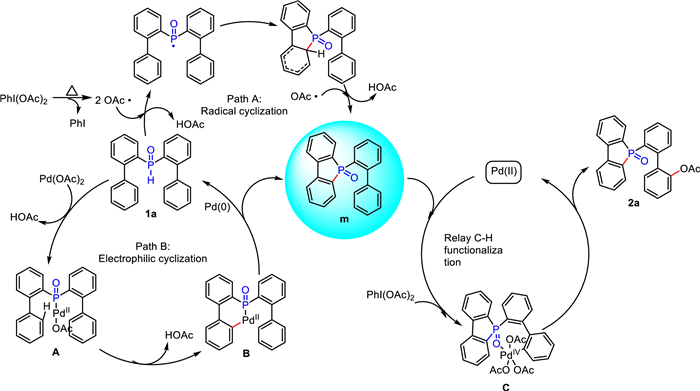Recently, metal-organic frameworks (MOFs) supported metal nanoparticles have attracted tremendous research interest because the micropores of MOFs can not only prevent the nanoparticles from aggregation and growth but also serve as a transfer path for the reaction substrates/products [19-26]. Moreover, compared with other porous materials such as zeolites and porous carbons, MOFs contain a large number of metal centers, which may interact with reactants to improve selectivity or catalyze the reaction directly [27-35]. Tang's group synthesized MIL-101(Fe)@Pt and achieved 86.4% selectivity to UOL, further suggested that MIL-101(Fe) can serve as effective selectivity regulator [28]. Hence, with MIL-101(Fe) as a protective layer and selectivity regulator, Ir NCs hybridized with MIL-101(Fe) were expected to exhibit an excellent activity and selectivity for hydrogenation of UAL to obtain high yield of UOL.
Herein, we have synthesized the hollow MIL-101(Fe) on preformed Ir NCs to generate Ir@MIL-101(Fe) composite. The obtained Ir@MIL-101(Fe) exhibits excellent performance in selective hydrogenation of a model molecule of α, β-unsaturated aldehyde, cinnamaldehyde (CAL), with 93.9% conversion in 4 h and 96.2% selectivity towards cinnamyl alcohol (COL), as well as high durability after 5 successive cycles, all which are much better than those of Ir NCs and physical mixture Ir/MIL-101(Fe) catalysts. On one hand, the Lewis acid sites in MIL-101(Fe) are capable to interact with the aldehyde group in CAL and electropositive Ir NCs might preferential absorb the electronegative oxygen atom in C=O group, both of which can promote the selectivity for COL. On the other hand, the special hollow structure of MIL-101(Fe) shortens the diffusion distance of reactants and remained the excellent hydrogenation.
To demonstrate the generality of our approach, Rh NCs confined within MIL-101(Fe) were also synthesized. The synthesis method of Rh@MIL-101(Fe) was similar to that of Ir@MIL-101(Fe), in which MIL-101(Fe) was in situ growth with the Rh NCs in the precursor solution to build hollow Rh@MIL-101(Fe) structures. The XRD patterns, SEM and HRTEM images, and N2 adsorption isotherms of Rh@MIL-101(Fe) were shown in Figs. S6, S7 and S10 (Supporting information). Resembled to that of Ir@MIL-101(Fe), the BET surface areas of Rh@MIL-101(Fe) (Table S2 in Supporting information) was far less than those of the parent MIL-101(Fe), due to the formation of mesoporous MIL-101(Fe), which illustrated the generality of our new strategy for preparing the hollow metal@MIL-101(Fe) catalysts. In order to explore the role of MOFs, Ir@UIO-66(Zr) was synthesized for comparison [40]. The detailed information of Ir@UIO-66(Zr) was shown in Figs. S8-S10 (Supporting information).
For the recyclability was another critical factor to evaluate the catalytic performance of catalysts, the stability tests of Ir@MIL- 101(Fe) and Ir/MIL-101(Fe) for selective hydrogenation of CAL were carried out. As seen in Fig. 2e, no appreciable loss in activity and selectivity was observed in Ir@MIL-101(Fe) in up to five runs. On the contrary, when it came to the third cycle, the activity of Ir/MIL-101(Fe) declined sharply and the selectivity dropped to 81.0% (Fig. 2f). This is because the Ir active sites in Ir/MIL-101(Fe) probably leached and aggregated during the reaction [42], while the Ir NCs confined within MIL-101(Fe) were immune to this problem, leading to great recyclability. It is worth mentioning that confining Ir NCs within MIL-101(Fe) cavities did not sacrifice their activity, since the turnover frequency (TOF) values of Ir@MIL-101(Fe) and Ir/MIL-101(Fe) were similar (Fig. S12 in Supporting information). The mesopores in MIL-101(Fe) provided enough space for the transport and diffusion of substrates and products, thus ensuring the efficient reaction [39]. Another factor attributed to high activity was that Ir NCs were mainly loaded in the near surface of MIL-101(Fe), which afforded a short diffusion distance of the reactants from the MIL-101(Fe) surface to the highly exposed NCs active sites [43]. In addition, though some active sites of Ir NCs were covered when loaded in or on the MIL-101(Fe), the TOF of Ir@MIL-101(Fe) and Ir/MIL-101(Fe) outperformed pure Ir NCs (Fig. S12), which may be attributed to hydrogen spillover effect on the surface of MIL-101(Fe) [44]. To investigate the universality of Ir@MIL-101(Fe), hydrogenation of different α, β-unsaturated aldehydes were tested. As shown in Table 1, almost all the substrates can reach over 90% selectivity to corresponding UOL. Above results fully suggest that Ir@MIL-101(Fe) is an excellent catalyst for selective hydrogenation of α, β-unsaturated aldehydes.
Since surface chemical structure of catalysts have a considerable influence on the catalytic behavior [45, 46], the electronic properties of Ir and Fe were characterized by X-ray photoelectron spectroscopy (XPS). Ir 4f spectrum of Ir@MIL-101(Fe) and Ir NCs clearly demonstrated that most of Iridium remained Ir0 valance but a portion of Ir3+ material existed on the surface, due to the oxidation in the air (Fig. 3a) [47]. The Fourier transforms of extended X-ray absorption fine structure (FT-EXAFS) further verified the existence of Ir metallic and oxide, since the peak of Ir-Ir bond and Ir-O bond were clearly found in the Ir L3-edge (Fig. S13 in Supporting information). Compared with the binding energy of Ir0 in Ir NCs (63.1 eV, 4f5/2), the higher binding energy in Ir@MIL-101(Fe) (64.1 eV, 4f5/2) indicated the lower electron density of Ir after confining within the hollow MIL-101(Fe). As for the binding energy of Fe3+ in Ir@MIL-101(Fe), the peak of Fe 2p3/2 obviously shifted from 716.0 eV to 714.5 eV after immobilization of Ir NCs, confirmed the electron transfer from Ir to MIL-101(Fe) (Fig. 3b). Since the O atom in C=O was electronegative, electropositive Ir NCs in Ir@MIL-101(Fe) may be able to absorb the C=O bond to activate it [48, 49], resulting in high selectivity towards COL.
In order to deeply investigate the reason for excellent COL selectivity, hydrogenation using COL and HCAL as the substrate were performed over Ir@MIL-101(Fe). As expected, the hydrogenation rate of C=O bond was clearly faster than that of C=C bond (Fig. 3c), attributing to enhance the selectivity of COL and avoid the over hydrogenation to a great extent. To find out the mechanism for selective hydrogenation of CAL, the Fourier transform infrared (FT-IR) spectroscopy was used to examine the adsorption of CAL on Ir@MIL-101(Fe). As shown in Fig. 3d, FT-IR survey showed an obvious redshift of the υC=O bond of CAL after mixing with Ir@MIL-101(Fe), confirming strong interaction between the C=O bond of CAL and Ir@MIL-101(Fe) [28, 50]. Similar adsorption behaviors were also observed when mixing CAL with Ir/MIL-101(Fe) and MIL-101(Fe) (Fig. S14 in Supporting information). These revealed that the synergistic effect of electropositive Ir NCs and the aldehyde activator MIL-101(Fe) was key to preferentially hydrogenate aldehyde group and maintaining high selectivity towards COL.
In summary, we have successfully developed a new method for confining metal NCs within hollow MOFs via in-situ growth of MOFs with metal NCs in the precursor solution. Interestingly, as-prepared Ir@MIL-101(Fe) exhibited impressive activity (93.9%), selectivity (96.2%) as well as great recyclability for the hydrogenation of CAL to COL under mild conditions. The electropositive Ir NCs, owing to the electron transfer from Ir to MIL-101(Fe), prefer to interact with oxygen lone pairs of aldehyde group and the Lewis acid sites in MIL-101(Fe) can strongly interact with C=O bond, both factors are attributed to high selectivity to COL. This work provides an efficient strategy to prepare promising materials for enhanced selective hydrogenation of α, β-unsaturated aldehyde.
The authors declare that they have no known competing financial interests or personal relationships that could have appeared to influence the work reported in this paper.
This work was supported by National Key R&D Program of China (No. 2018YFA0108300), the Overseas High-level Talents Plan of China and Guangdong Province, the 100 Talents Plan Foundation of Sun Yat-sen University, the Program for Guangdong Introducing Innovative and Entrepreneurial Teams (No. 2017ZT07C069), the Fundamental Research Funds for the Central Universities, and the NSFC Projects (Nos. 21905315 and 22075321).
Supplementary material associated with this article can be found, in the online version, at doi:10.1016/j.cclet.2021.06.047.
-
[1]
Y. Uozumi, N. Suzuki, A. Ogiwara, T. Hayashi, Tetrahedron50 (1994) 4293–4302.
doi: 10.1016/S0040-4020(01)89366-2
-
[2]
T. Hayashi, Catal. Today62 (2000) 3–15.
doi: 10.1016/S0920-5861(00)00404-1
-
[3]
T. Hayashi, Acc. Chem. Res. 33 (2000) 354–362.
doi: 10.1021/ar990080f
-
[4]
T. Morimoto, N. Mochizuki, M. Suzuki, Tetrahedron Lett. 45 (2004) 5717–5722.
doi: 10.1016/j.tetlet.2004.05.101
-
[5]
M. Berthod, G. Mignani, G. Woodward, M. Lemaire, Chem. Rev. 105 (2005) 1801–1836.
doi: 10.1021/cr040652w
-
[6]
S. Wang, J. Li, Miao, L. Qiu, et al., Org. Lett. 14 (2012) 1966–1969.
doi: 10.1021/ol300721p
-
[7]
Y. Zhou, X. Zhang, L. Qiu, et al., ACS Catal. 4 (2014) 1390–1397.
doi: 10.1021/cs500208n
-
[8]
Y.N. Ma, S.D. Yang, Chem. Eur. J. 21 (2015) 6673–6677.
doi: 10.1002/chem.201406554
-
[9]
Q.J. Wang, H.H. Wu, J.L. Zhang. ACS Catal. 10 (2020) 1548–1554.
doi: 10.3390/polym12071548
-
[10]
H. Tsuji, K. Sato, Y. Sato, E. Nakamura, Chem. Asian J. 5 (2010) 1294–1297.
-
[11]
Y. Matano, A. Saito, T. Fukushima, et al., Angew. Chem. Int. Ed. 50 (2011) 8016–8020.
doi: 10.1002/anie.201102782
-
[12]
M. Stolar, T. Baumgartner, Chem. Asian J. 9 (2014) 1212–1225.
doi: 10.1002/asia.201301670
-
[13]
F. Bu, E. Wang, B.Z. Tang, et al., Chem. Eur. J. 21 (2015) 4440–4449.
doi: 10.1002/chem.201405902
-
[14]
E. Yamaguchi, C. Wang, A. Fukazawa, M. Taki, et al., Angew. Chem. Int. Ed. 54 (2015) 4539–4543.
doi: 10.1002/anie.201500229
-
[15]
C. Fave, T.Y. Cho, M. Hissler, et al., J. Am. Chem. Soc. 125 (2003) 9254–9255.
doi: 10.1021/ja035155w
-
[16]
Y. Makioka, T. Hayashi, M. Tanaka, Chem. Lett. 33 (2004) 44–45.
doi: 10.1246/cl.2004.44
-
[17]
F. Mathey, Acc. Chem. Res. 37 (2004) 954–960.
doi: 10.1021/ar030118v
-
[18]
H.C. Su, O. Fadhel, C.J. Yang, T.Y. Cho, et al., J. Am. Chem. Soc. 128 (2006) 983–995.
doi: 10.1021/ja0567182
-
[19]
T. Baumgartner, R. Reau, Chem. Rev. 106 (2006) 4681–4727.
doi: 10.1021/cr040179m
-
[20]
H. Tsuji, K. Sato, Y. Sato, E. Nakamura, J. Mater. Chem. 19 (2009) 3364–3366.
doi: 10.1039/b906197e
-
[21]
Y. Matano, A. Saito, Y. Suzuki et al., Chem. Asian J. 7 (2012) 2305–2312.
doi: 10.1002/asia.201200492
-
[22]
H. Tsuji, S. Komatsu, Y. Kanda, T. Umehara, et al., Chem. Lett. 35 (2006) 758–759.
doi: 10.1246/cl.2006.758
-
[23]
Y. Dienes, M. Eggenstein, T. Karpati, et al., Chem. Eur. J. 14 (2008) 9878–9889.
doi: 10.1002/chem.200801549
-
[24]
A. Fukazawa, M. Hara, T. Okamoto, et al., Org. Lett. 10 (2008) 913–916.
doi: 10.1021/ol7030608
-
[25]
T. Sanji, K. Shiraishi, T. Kashiwabara, M. Tanaka, Org. Lett. 10 (2008) 2689–2692.
doi: 10.1021/ol800841v
-
[26]
Y. Matano, A. Saito, T. Fukushima, et al. Angew. Chem. Int. Ed. 50 (2011) 8016–8020.
doi: 10.1002/anie.201102782
-
[27]
Y. Ren, T. Baumgartner, J. Am. Chem. Soc. 133 (2011) 1328–1340.
doi: 10.1021/ja108081b
-
[28]
A. Bruch, A. Fukazawa, E. Yamaguchi, et al., Angew. Chem. Int. Ed. 50 (2011) 12094–12098.
doi: 10.1002/anie.201104114
-
[29]
Y. Hayashi, Y. Matano, K. Suda, et al., Chem. Eur. J. 18 (2012) 15972–15983.
doi: 10.1002/chem.201203047
-
[30]
Y. Sawada, S. Furumi, A. Takai, et al., J. Am. Chem. Soc. 134 (2012) 4080–4083.
doi: 10.1021/ja300278e
-
[31]
B. Wu, M. Santra, N. Yoshikai, Angew. Chem. Int. Ed. 53 (2014) 7543–7546.
doi: 10.1002/anie.201404019
-
[32]
B. Li, M.K. Zhang, X.L. Huang, Z.H. Gu, Org. Chem. Front. 4 (2017) 1854–1857.
doi: 10.1039/C7QO00310B
-
[33]
E. Si, P. Zhao, L.L. Wang, Z. Duan, F. Mathey, Eur. J. Org. Chem. 2020 (2020) 697–701.
doi: 10.1002/ejoc.201901753
-
[34]
H. Fujimoto, M. Kusano, T. Kodama, M. Tobisu, Org. Lett. 22 (2020) 2293–2297.
doi: 10.1021/acs.orglett.0c00489
-
[35]
K. Nishimura, K. Hirano, M. Miura, Org. Lett. 22 (2020) 3185–3189.
doi: 10.1021/acs.orglett.0c00944
-
[36]
Y. Kurimoto, J. Yamashita, K. Mitsudo, E. Sato, S. Suga, Org. Lett. 23 (2021) 3120–3124.
doi: 10.1021/acs.orglett.1c00807
-
[37]
D. Alberico, M.E. Scott, M. Lautens, Chem. Rev. 107 (2007) 174–238.
doi: 10.1021/cr0509760
-
[38]
T.W. Lyons, M.S. Sanford, Chem. Rev. 110 (2010) 1147–1169.
doi: 10.1021/cr900184e
-
[39]
C.L. Sun, B.J. Li, Z.J. Shi, Chem. Rev. 111 (2011) 1293–1314.
doi: 10.1021/cr100198w
-
[40]
K.M. Engle, T.S. Mei, M. Wasa, J.Q. Yu, Acc. Chem. Res. 45 (2011) 788–802.
-
[41]
N. Kuhl, M.N. Hopkinson, J.W. Delord, F. Glorius, Angew. Chem. Int. Ed. 51 (2012) 10236–10254.
doi: 10.1002/anie.201203269
-
[42]
J.K. Wang, Y.X. Zong, G.R. Yue, et al., Chin. Chem. Lett. 26 (2015) 1376–1380.
doi: 10.1016/j.cclet.2015.08.001
-
[43]
C. Wang, L. Luo, H. Yamamoto, Acc. Chem. Res. 49 (2016) 193–204.
doi: 10.1021/acs.accounts.5b00428
-
[44]
J.A. Labinger, Chem. Rev. 117 (2017) 8483–8496.
doi: 10.1021/acs.chemrev.6b00583
-
[45]
M. Parasram, V. Gevorgyan, Acc. Chem. Res. 50 (2017) 2038–2053.
doi: 10.1021/acs.accounts.7b00306
-
[46]
C. Sambiagio, D. Schönbauer, M. Schnürch, et al., Chem. Soc. Rev. 47 (2018) 6603–6743.
-
[47]
Q. Shao, K. Wu, Z. Zhuang, S. Qian, J.Q. Yu, Acc. Chem. Res. 53 (2020) 833–851.
doi: 10.1021/acs.accounts.9b00621
-
[48]
K.J. Jiao, Y.K. Xing, Q.L. Yang, H. Qiu, T.S. Mei, Acc. Chem. Res. 53 (2020) 300–310.
doi: 10.1021/acs.accounts.9b00603
-
[49]
K. Yang, Y. Li, M. Song, et al., Chin. Chem. Lett. 32 (2021) 146–149.
doi: 10.1016/j.cclet.2020.11.036
-
[50]
L. Liu, H. Liu, Z. Zuo et al., Chin. Chem. Lett. 32 (2021) 239–242.
-
[51]
K. Baba, M. Tobisu, N. Chatani, Angew. Chem. Int. Ed. 52 (2013) 11892–11895.
doi: 10.1002/anie.201307115
-
[52]
S. Hashimoto, S. Nakatsuka, M. Nakamura, T. Hatakeyama, Angew. Chem. Int. Ed. 53 (2014) 14074–14076.
doi: 10.1002/anie.201408390
-
[53]
S. Furukawa, S. Haga, J. Kobayashi, T. Kawashima, Org. Lett. 16 (2014) 3228–3231.
doi: 10.1021/ol501189u
-
[54]
Z. Lian, B.N. Bhawal, P. Yu, B. Morandi, Science. 356 (2017) 1059–1063.
doi: 10.1126/science.aam9041
-
[55]
K. Nishimura, K. Hirano, M. Miura, Org. Lett. 21 (2019) 1467–1470.
doi: 10.1021/acs.orglett.9b00219
-
[56]
H. Fujimoto, M. Kusano, T. Kodama, M. Tobisu, Org. Lett. 21 (2019) 4177–4181.
doi: 10.1021/acs.orglett.9b01355
-
[57]
Y. Kuninobu, T. Yoshida, K. Takai, J. Org. Chem. 76 (2011) 7370–7376.
doi: 10.1021/jo201030j
-
[58]
Y.M. Cui, L.Z. Fu, J. Cao, et al., Adv. Synth. Catal. 356 (2014) 1217–1222.
doi: 10.1002/adsc.201301081
-
[59]
K. Baba, M. Tobisu, N. Chatani, Org. Lett. 17 (2015) 70–73.
doi: 10.1021/ol503252t
-
[60]
Y. Lin, W.Y. Ma, Q.Y. Sun, Y.M. Cui, L.W. Xu, Synlett28 (2017) 1432–1436.
doi: 10.1055/s-0036-1588983
-
[61]
Z. Li, Z.Q. Lin, C.G. Yan, W.L. Duan, Organometallics38 (2019) 3916–3920.
doi: 10.1021/acs.organomet.9b00216
-
[62]
Y.R. Chen, W.L. Duan, J. Am. Chem. Soc. 135 (2013) 16754–16757.
doi: 10.1021/ja407373g
-
[63]
Y. Unoh, K. Hirano, T. Satoh, M. Miura, Angew. Chem. Int. Ed. 52 (2013) 12975–12979.
doi: 10.1002/anie.201307211
-
[64]
P. Zhang, Y. Gao, L. Zhang, et al., Adv. Synth. Catal. 358 (2016) 138–142.
doi: 10.1002/adsc.201500667
-
[65]
D.M. Ma, W.Z. Chen, Y.F. Zhao, et al., Green Chem. 18 (2016) 3522–3526.
doi: 10.1039/C6GC01009A
-
[66]
V. Quint, F. MorletSavary, J.F. Lohier, et al., J. Am. Chem. Soc. 138 (2016) 7436–7441.
doi: 10.1021/jacs.6b04069
-
[67]
J. Li, W.W. Zhang, X.J. Wei, B. Jiang, et al., Org. Lett. 19 (2017) 4512–4515.
doi: 10.1021/acs.orglett.7b02071
-
[68]
D. M Ma, J.T. Pan, Y.F. Zhao, et al., Org. Lett. 20 (2018) 3455–3459.
doi: 10.1021/acs.orglett.8b01108
-
[69]
K. Nishimura, Y. Unoh, K. Hirano, M. Miura, Chem. Eur. J. 24 (2018) 13089–13092.
doi: 10.1002/chem.201803225
-
[70]
L.X. Liu, J.Y. Dong, Y.B. Zhou, et al., Chem. Commun. 55 (2019) 233–236.
doi: 10.1039/c8cc08689c
-
[71]
H. Hou, Y. Xu, H.B. Yang, S.Q. Zhu, et al., Org. Biomol. Chem. 17 (2019) 8175–8184.
doi: 10.1039/c9ob01585j
-
[72]
W.Q. Liu, T. Lei, S. Zhou, L.Z. Wu, et al., J. Am. Chem. Soc. 141 (2019) 13941–13947.
doi: 10.1021/jacs.9b06920
-
[73]
D. Zhao, C. Nimphius, M. Lindale, F. Glorius, Org. Lett. 15 (2013) 4504–4507.
doi: 10.1021/ol402053n
-
[74]
D. Eom, Y. Jeong, P.H. Lee, et al., Org. Lett. 15 (2013) 5210–5213.
doi: 10.1021/ol402736v
-
[75]
L.Y. Chan, L. Cheong, S. Kim, Org. Lett. 15 (2013) 2186–2189.
doi: 10.1021/ol400732q
-
[76]
L. Liu, H. Yuan, T. Fu, Y.J. Zhao, et al., J. Org. Chem. 79 (2014) 80–87.
-
[77]
D. Gwon, D. Lee, J. Kim, S. Park, S. Chang, Chem. Eur. J. 20 (2014) 12421–12425.
doi: 10.1002/chem.201404151
-
[78]
K.M. Crawford, T.R. Ramseyer, C.J.A. Daley, T.B. Clark, Angew. Chem. Int. Ed. 53 (2014) 7589–7593.
doi: 10.1002/anie.201402868
-
[79]
X.H. Hu, X.F. Yang, T.P. Loh, Angew. Chem. Int. Ed. 54 (2015) 15535–15539.
doi: 10.1002/anie.201506437
-
[80]
Y. Unoh, T. Satoh, K. Hirano, M. Miura, ACS Catal. 5 (2015) 6634–6639.
doi: 10.1021/acscatal.5b01896
-
[81]
Z.J. Du, J. Guan, F.S. Han, J. Am. Chem. Soc. 137 (2015) 632–635.
doi: 10.1021/ja512029x
-
[82]
T.T. Nguyen, L. Grigorjeva, O. Daugulis, ACS Catal. 6 (2016) 551–554.
doi: 10.1021/acscatal.5b02391
-
[83]
Y. Yang, X. Qiu, Z. Shi, J. Am. Chem. Soc. 138 (2016) 495–498.
doi: 10.1021/jacs.5b11569
-
[84]
Y.S. Jang, M. Dieckmann, N. Cramer, Angew. Chem. Int. Ed. 56 (2017) 15088–15092.
doi: 10.1002/anie.201708440
-
[85]
S.X. Li, Y.N. Ma, S.D. Yang, Org. Lett. 19 (2017) 1842–1845.
doi: 10.1021/acs.orglett.7b00608
-
[86]
Y.N. Ma, S.X. Li, S.D. Yang, Acc. Chem. Res. 50 (2017) 1480–1492.
doi: 10.1021/acs.accounts.7b00167
-
[87]
C. Li, X.Y. Qiang, Z.C. Qi, S.D. Yang, Org. Lett. 21 (2019) 7138–7142.
doi: 10.1021/acs.orglett.9b02697
-
[88]
Y. Niu, Z.C. Qi, Q.X. Lou, P.B. Bai, S.D. Yang, Chem. Commun. 56 (2020) 14721–14724.
doi: 10.1039/d0cc06639g
-
[89]
Z.C. Qi, Q.X. Lou, Y. Niu, S.D. Yang, Chem. Commun. 57 (2021) 2021–2024.
doi: 10.1039/d0cc07596e
-
[90]
H.Y. Zhang, H.M. Yi, G.W. Wang, B. Yang, S.D. Yang, Org. Lett. 15 (2013) 6186–6189.
doi: 10.1021/ol403028a
-
[91]
H. Zhang, R.B. Hu, X.Y. Zhang, S.X. Li, S.D. Yang, Chem. Commun. 50 (2014) 4686–4689.
doi: 10.1039/C4CC01238K

 Login In
Login In

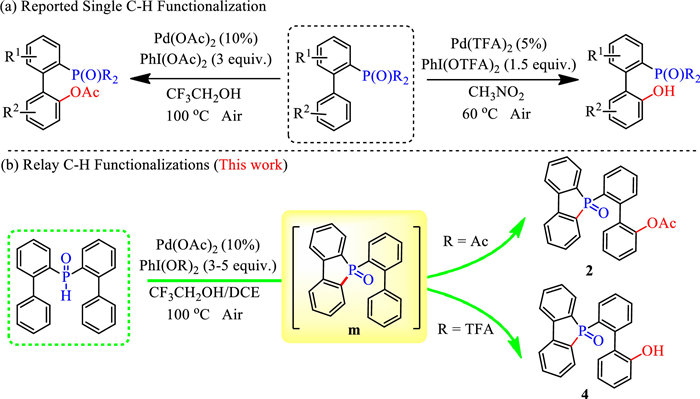




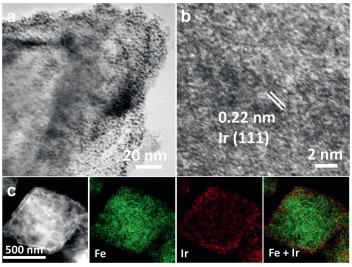
 DownLoad:
DownLoad:
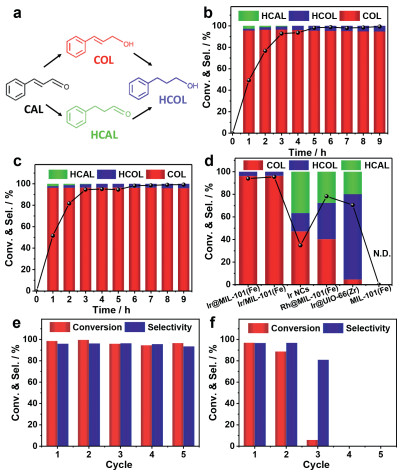
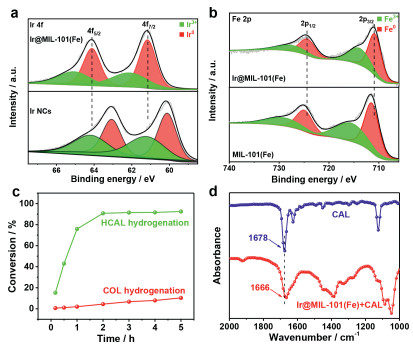
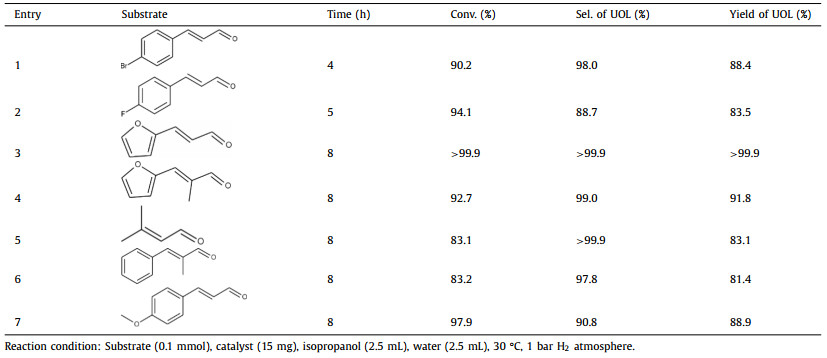
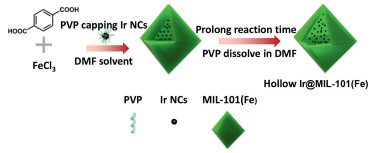

 DownLoad:
DownLoad:
